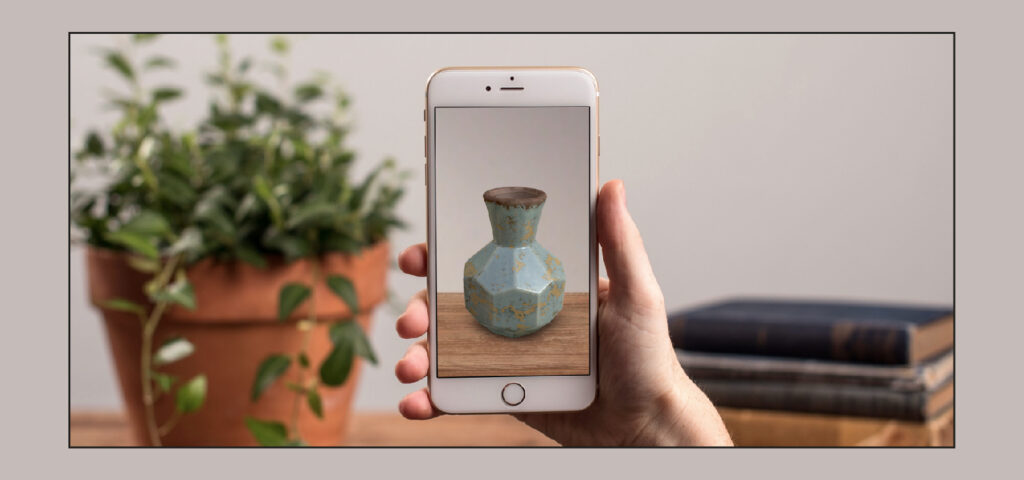‘It is difficult to determine size while shopping clothes online.’
-The plight of an online shopper
An online shopper in India goes through ambiguity while selecting the right size of apparel. The fashion and apparel category though being one of the most revenue-generating category is recognized to have the highest return rate, with colour, size, and textile being the major reasons. Findings of a RedSeer report of 2019 say that about 20-30 percent of the products bought from fashion e-commerce stores are returned that accounts for about $6 billion of the total $32 billion gross merchandise value of online retail in India. Sometimes, when a customer returns a product, he has to incur the charges for reverse shipping. Reverse shipping becomes expensive for the company since the logistics firm has to go to that location to pick up that one parcel. Also, since the ordered apparel is worn and tried by multiple people, the same is repacked and sold to the next customer, by which the apparel neither gets washed nor ironed. To resolve this problem of high returns, the fashion e-commerce sector needs to implement technology solutions such as AR, VR and virtual assistants, etc. by which the customer can purchase the right apparel.
‘‘
About 20-30 percent of all fashion products bought online are returned that accounts for about $6 billion of the total $32 billion gross merchandise value of online retail in India.
- RedSeer Report, 2019
Phygital = Physical + Digital
The pandemic has restricted movement and people are comfortable buying online. With an increase in online shopping, its good times for offline stores. Shops that initially began as an offline store can transit into an online one offering a phygital experience. A phygital experience shopping experience is an amalgamation of technology such as Blockchain, virtual reality and augmented reality infused with the experience of physical shopping. Implementation of such technologies can be used for geo-targeting consumers and help fashion retail companies create specific offers and rewards. It will also aid the fashion e-commerce companies to gather insights on consumer shopping habits and patterns, footfall, efficiency, etc. It also helps to improve brand positioning, promotion, product, pricing and shopping experience.
New Tech trends that will enhance the fashion e-commerce shopping
The virtual shopping assistants
Consumer preferences and trends especially in the fashion industry are highly volatile, making it imperative for fashion e-commerce companies to go for a personalized shopping approach and customer-centric merchandising. Mimicking the sales assistants in a physical store, the fashion e-commerce companies can implement AI-based chatbots as the new virtual sales representatives. These AI chatbots or virtual representatives are computer programs that simulate a human conversation through chatting and messaging. When a customer arrives at the website, the AI chatbots engage with the site visitor in a conversation, first introducing themselves as a chatbot and shooting an array of questions that determines what the customer is searching for. After, knowing the preferences, the AI chatbots can directly take the customer to browse collections in the catalogue. The virtual assistants can provide suggestions of styling, selection of outfits, customer service, and product discovery. The conversational tone of finding products on the website makes the filter feature an obsolete one.
Virtual Trial Rooms
The fashion e-commerce industry is plagued by high returns that can be blamed on the inability to detect the right size of apparel bought. The long queue before trial room can be tackled by leveraging AR (augmented reality) technology that enables a virtual fitting room. In a virtual fitting room, the shoppers can click a picture of themselves and drag the chosen outfits that are AR filters, and create a unique style. Multiple collages of every outfit, style and fitting can be created for comparison and understand what works best.
An alternate virtual fitting room can also be created by including 3D models. Virtually a 3D model can be created by mimicking a shopper’s exact body measurements. Once the 3D model is made, it is a replica of the shopper itself, from where we can drag various outfits to the 3D model created.
A virtual fitting room allows shoppers to experiment with various looks and apparel combinations, which in offline trial room is limited to a few apparels.
Self-Checkout Kiosks
Online businesses are adopting omnichannel strategies to fully leverage the supply chain and better utilization of inventory. Unlike online shopping, billing of items in an offline store consumed a significant amount of time, leaving the shoppers annoyed. In times when customers are seeking instant gratification, the time taken for billing can be reduced by keeping self-checkout kiosks. Self-checkout kiosks enable quicker checkout by allowing the customer to complete billing in simpler steps and without any intervention of humans.
Blockchain Technology
Besides finance and digital currencies, blockchain technology is gaining ground in the fashion ecommerce industry as well. Customers often vent their resentment on social media of not receiving genuine products that eventually erodes the brand image. To counter fake products or products of substandard quality, blockchain technology in combination with physical RFID chips or QR codes, companies can track the multiple stages involved in sourcing the raw materials to distribution of finished products to the end consumer. It ensures that the entire process right from manufacturing to a finished product is performed in an ethical and secured manner by monitoring in between processes. It induces transparency since blockchain’s characteristic of distributed ledger can be accessed by manufacturers, suppliers, and vendors. The ledger contains a detailed history of the product’s origin to where it is presently.
How Shopify Helps Fashion E-commerce
Shopify AR
Fashion online stores website is the showroom, and the better the display of vibrant colours and detailing of a fabric or apparel, the more it entices the customer. Shopify AR is a web-powered augmented reality service that gives an immersive shopping experience to the customers driving more sales. It brings the product alive and allows shoppers to have a realistic idea of the size, scale, and detail of the products. Just like images, we can add 3D models to product pages. As per Shopify’s study, the conversion rate of products increases by 94 percent if it has AR content. It has an accessible toolkit to create a 3D model of the product that can be stored in the 3D Warehouse App that is integrated with Shopify AR, making it easy to add any models to the product pages. Shopify has an AR-powered-product customizer that can determine how potential buyers, window, shoppers, and loyal customers and explore products online. Its ‘size-up feature’ and 360-degree viewer allows customer to get an enlarged view of the product. The file size of the 3D-model should be of a minimum of 6MB and a maximum of 15 MB and file type to be in GLB. GLB is the binary version of the gITF (Graphics Language Transmission Format) 3D file format.
AI Chatbots
Artificial intelligence is shaping the online customer experiences by addressing their queries, grievances, providing suggestions, thus reducing the barrier of interaction between a brand and customer, personalizes the experience. The Shopify app store has a plethora of AI Chatbots apps to install for your fashion e-commerce site. The AI chatbots also connect with social media platforms. In case we want an in-built chatbot for the store, we can have some customized chatbot designs for an A/B test. The top five AI chatbots for Shopify are Tidio, Gobot, Tobi, Kit, and Intelliticks.
‘‘
As per Shopify's study, the conversion rate of products increases by 94 percent if it has AR content.
A blockchain plugin
The counterfeit products put business owners’ years of hard work in vain. The influx of counterfeit products in fashion e-commerce can be blamed on the lack of monitoring and control on the journey of raw materials to a finished product. However, Shopify is tackling this menace by blockchain integrated plugins, to ensure that the items sold on the site are authentic. The plugin is a combination of blockchain technology and a cloud-based application ‘TAM’ that allows companies to create non-fungible tokens (NFT) with which the physical assets can be secured. NFTs are cryptographic tokens that are unique and cannot be mutually interchanged. Products consisting of an NFT can be scanned by the customer to check if it is genuine.
The minimum contact to pay
To revolutionize the in-store retail experience for brands with an omnichannel presence, Shopify has launched a point-of-sale (POS) hardware Shopify Tap & Chip Reader. Shopify’s Tap and Chip reader allows customers to complete transactions by scanning the contactless mobile payment apps or by inserting credit/debit cards. The reader also connects with Shopify POS that provides a host of facilities like inventory management, secured payments, and a consolidated backend that links directly to the merchant’s online store.
With the above-mentioned technology advantages that Shopify offers, it is time for the fashion business owners to kickstart their own private fashion label.





